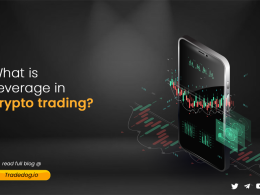Quick Links
The digital revolution has transformed many aspects of our lives, and online shopping is no exception. The rise of cryptocurrencies is ushering in a new era for e-commerce, challenging traditional payment systems and offering innovative solutions. One of the most intriguing developments in this space is the emergence of publisher-exchanges. These platforms leverage the unique properties of cryptocurrencies to redefine online transactions, bringing efficiency, security, and new opportunities for both consumers and retailers.
What Are Publisher-Exchanges?
A publisher-exchange is a hybrid digital platform that merges the roles of content publishers and financial exchanges. They act as intermediaries between publishers (sellers) and buyers, ensuring seamless and secure exchanges. Unlike traditional payment gateways that rely on banks and credit card companies, publisher-exchanges utilize blockchain technology to process payments, offering a decentralized and transparent alternative.
The Evolution of Online Shopping in Web3
In Web2, consumer applications like Instagram, TikTok, and Netflix are meticulously designed to keep users engaged through frequent, small doses of dopamine. When financial products are layered on top of these sticky consumer apps, they perform extremely well, as seen with platforms like WeChat.
We live in a world where we are exposed to content at an exponential rate. Imagine if money could be exchanged as seamlessly as information, this is something which use of crypto can unlock. Crypto consumer apps can enable any publisher or exchange to offer new forms of user engagement through native trading, speculation, issued-credit, and more. If properly curated, these applications can create far deeper user commitment than singular publishers ever could.
Exchanges in crypto are to money what major publishers like X, Instagram, and more are to the consumer internet: they control the flow of value.
Redefining Consumer Applications
The next generation of consumer applications will blur the lines between exchanges and publishers, forging new experiences that combine money and attention. The future of online exchanges will not resemble traditional models like Coinbase with order books and depth charts. Instead, it will take on innovative forms such as short-form video apps where audiences can wager on the virality of upcoming creators’ content or group chats where friends can instantly launch an NFT collection based on an inside joke or meme.
Imagine this scenario: You see an influencer on Instagram wearing a jacket you love, you see a button below the post, you click on “buy,” pay using crypto, and check out right on the social media app itself. This seamless integration of e-commerce and social interaction is what the future with publisher-exchanges look like. These publisher-exchanges will increase the surface area for new asset issuance by embedding issuance and native trading into application front ends, allowing for novel ways to interact and coordinate those assets.
Emergent Categories of Publisher-Exchanges
Messengers
Chat applications are great candidates to be publisher-exchanges. For instance, WhatsApp and WeChat have rich developer ecosystems that embed labor markets and local merchant e-commerce directly into users’ social graphs. Within crypto, Telegram serves as the de facto messenger. Telegram bots exemplify the concept of publisher-exchanges by combining discovery and intent with execution, thereby streamlining the process between attention and value transfer. Telegram features its own hidden app store (accessible by typing ‘tapps’ in the search bar), offering hundreds of bots that enable users to send payments, play games, discover content, and more.
While these publisher-exchange bots primarily serve to reduce execution time for retail traders seeking advantages in closed chat groups, there are vast opportunities to expand the range of assets that can be issued and traded. We foresee chat groups becoming a foundational layer for new forms of work (e.g., getting paid for task completion directly within the chat), special projects (e.g., crowdfunding new initiatives within large conversations), shopping and more – all of which are publisher-exchange experiences.
Content Networks
Most of the social media applications like Instagram, TikTok, X, YouTube are content marketplaces where creators compete for users’ attention and majority of these content networks today monetize attention through display advertising. This ad-based model of customer acquisition typically suffers from a leaky conversion funnel and often disrupts the user experience, as users are acutely aware of being marketed to.
Display ads are a relic of the pre-crypto era. A more effective approach for merchants to acquire users is through Direct Value Issuance (DVI), where users are directly compensated with tokens. Rather than delivering targeted ads based on user behavior or cohort construction, advertisers should distribute value directly to users. For example, instead of placing an ad for a sports betting platform between posts during a live NBA game, the platform could directly airdrop $10 worth of credit to targeted users who have interest in sports or online betting. These credits can then be exclusively used to place bets on the platform which is embedded in the content networks itself.
By delivering their customer acquisition budgets directly to end users, advertisers can bypass platforms as rent-seeking intermediaries. Consequently, content marketplaces can offer a superior product: they shift from being venues that farm user attention without sharing the financial benefits, to platforms that allow users to earn and spend assets based on their engagement (via DVI).
Conclusion
Consumer crypto applications will represent a generative shift, not an imitative one. The primary unlock of crypto is that trades can happen everywhere, creating new economies for attention where people can trade minutes for dollars and vice versa. Publisher-exchanges represent the future of e-commerce, offering a tighter relationship between money and attention not possible in Web2.
Web2 publisher-exchanges are likely to adopt crypto payments due to the demographic similarities and new functionalities granted by moving payments on-chain. We can expect to see a resurgence in verticalized crypto payment startups, performant privacy technology, chain/balance abstraction, and seamless non-custodial experiences. This is a golden era of experimentation – a blank slate for developers to combine native issuance and trading with novel in-app experiences, ultimately shaping the future of online shopping.









